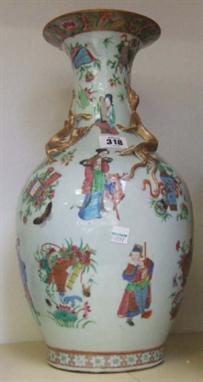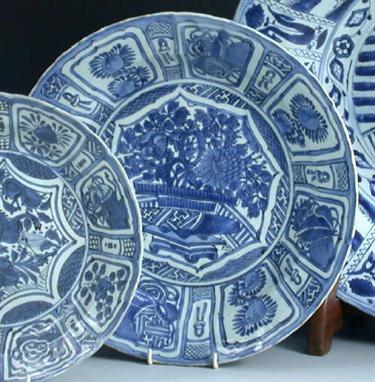We found 11604 price guide item(s) matching your search
There are 11604 lots that match your search criteria. Subscribe now to get instant access to the full price guide service.
Click here to subscribe- List
- Grid
A 20th century Chinese vase painted on the neck with two reserves of Buddhist objects and on the tapering cylindrical body with rectangular reserves of baskets of flowers alternating with fan shaped reserves on the blue ground gilt with scrolling foliage six character mark of Kangxi 60.5cm high (D)
Antony Gormley b. 1950 UNTITLED (QUANTUM CLOUD) signed on the reverse ballpoint pen on card 15 by 10cm.; 5.875by 4in. Antony Gormley's oeuvre takes as its central theme the human body; both its materiality and its attendant spirituality. The Quantum Cloud Series a concept that the artist developed towards the end of the 1990s represents a response to the sheer presence of his earlier works by combining a stylistic and technical move towards the spirituality that as a lifelong Buddhist was so dear to him. The sculptural works from this series represent the first time that Gormley had used assemblage in place of casting and as a result the once monolithic body assumes an ethereal and less permanent quality. As such this series can be seen as being particularly important to the development of his style as it re-defines his relationship with his own body and thus with his experience of life what he called Òthe subject of sculptureÓ. ÒMy body is the closest experience of matter that I will ever have and the only part of the material world that I live inside.Ó1 1Extracts from interview with Udo Kittelmann on Total Strangers Kolnischer Kunstverein 1999 Provenance RCA Secret London Acquired from the above by the present onwer in 1999
Nahar (Puran Chand) and Krishnachandra Ghosh. An Epitome of Jainism signed presentation copy from Nahar Calcutta 1917 § Shurreef (Jaffur) Qanoon-e-Islam or the Customs of the Moosulmans of India translated by G.A.Herklots engraved frontispiece later cloth 1832 § Stcherbatsky (T.) Buddhist Logic 2 vol. modern cloth original printed wrappers mounted on upper covers Leningrad 1932 § Wilson (J.) Indian Caste 2 vol. in 1 Bombay etc. 1877 § Dubois (J.A.) Hindu Manners Customs and Ceremonies translated by H.K.Beauchamp second edition portrait Oxford 1899 § Havell (E.B.) Benares illustrations 1905 § Hanayama (Shinsho) Bibliography on Buddhism Tokyo 1961 some browning the first and last three original cloth or cloth-backed boards the last with dust-jacket the fourth rebacked most rubbed; and c.65 others on Indian religions 8vo & 4to (c.70)
A small collection of Esoteric titles to include; Kant, Immanuel - (John RICHARDSON, translation and biography) - Metaphysical Works of the celebrated Immanuel Kant, translated from the German, with a Sketch of his Life and Writings, by John Richardson, many years a student of the Kantian philosophy. Containing 1. Logic. 2. Prolegomena to Future Metaphysics. 3. Enquiry into the Proofs for the Existence of God, and into the Theodicy, now first published: London, Printed for W.Simpkin and R.Marshall, 1836, 8vo, cloth covered boards (distressed) Three titles bound in one book, first edition in English of the third title, each with separate pagination and titlepage, bound together with extra titlepage as above. Frontis. engraved portrait of Kant, book 3 frontis engraved double portrait of Kant and Hume, 1 advertising leaf to rear:Schlagintweit Emil.- Buddhism in Tibet illustrated by literary documents and objects of religious worship. With an account of the Buddhist systems preceeding it in India. With.twenty tables of native print in the text: Leipzig, & London, 1863, 8vo, cloth covered boards, stained and worn, some worm distress to text margins;Cotsworth, Moses B. - Rational Almanac Tracing the Evolution of Modern Almanacs from Ancient ideas of time, and suggesting improvements...13 months to the year. Holidays and Festivals, also week days fixed on permanent dates to gain much more public convenience. 180 illustrations explaining the mystery of the pyramids, sphinx, obelisks, Druidical circles, mounds, vertical stones, etc: Moses B. Cotsworth, Acomb, York; n/d [1905] gilt decorated dark blue cloth, slim 8vo, probably the finest copy of this scarcest of Cotsworth's work;Tissot, Dr (trans by Kirkpatrick, J) - Advice to the People in General, with Regard to Their Health, But Particularly Calculated for Those, Who are the Most Unlikely to be Provided in Time with the Best Assistance, in Acute Diseases, or Upon Any Sudden Inward or Outward Accident: London, 1768, 3rd revised and corrected edn, 8vo, full sheep with raised bands, weak shoulders, loss to top and tail of spine;Von Grimmelshausen, Hans Jacob Christoph (trans by Goodrick A.T.S) -The Adventurous Simplicissimus Being the Description of the Life of a Strange Vagabond Named Melchior Sternfels Von Fuchshaim - 1st English Edition 1912, being the life of a strange vagabond named Melchior Sternfels von Fuchshaim: London, 1912, 8vo, numbered limited edition being number 744/1000 only, original publishers boards, quarted morocco over dec cloth, gilt;Blunt, John Henry - Dictionary of sects, heresies, ecclesiastic parties, and schools of religious thought: London, Rivingtons, 1874, royal 8vo, original publishers cloth binding, rubbed and generally worn, gilt (6)
A collection of ivory figures comprising: a warrior with a staff inscribed signature 8.5cm high; a man standing on a rock with a devil at his feet inscribed signature 10cm high; a Buddhist monk with a child holding a fan inscribed signature 9.5cm high; three Buddhistic or Hindu figures including Ganesh 5.5cm high; three elephants of various sizes largest 7cm long; together with a pair of ivory tusk vases both intricately carved with opposed panels of figures amongst trees and buildings each on wooden base 9cm high (11)
A Chinese part dinner service each piece painted with a yellow vase of blossom and with Buddhist objects within thunder scroll rim band printed with six character marks of Doaguang comprising: tureen and cover two dinner plates three soup plates nine spoons twelve side plates four rice bowls twelve smaller bowls two saucers and four pickle dishes (D) (50)
Hedin (Sven) Through Asia, 1st ed., 1898, half-titles present, photogravure port. frontis. to each, num. b & w illusts. from photos., two folding maps, t.e.g., remainder untrimmed, orig. gilt dec. cloth, rubbed and minor wear to head and foot of spines, 8vo This is an account of Hedin's early travels in Chinese Turkistan and his search for the sand-buried Buddhist cities and treasures of the Takla Maken. (2)
An attractive pair of Chinese silk embroidered rank badges each side with an eighth civil rank quail standing on a wave mountain surrounded by bats cloud-bands flowers Buddhist emblems etc all finely worked in satin stitch and gold brocade in a similarly worked ‘frame’ the front in two equal sections as usual China second half 19th century each face 12in 31cm. sq. Gold brocading slightly pulled in places. Now stitched together to form a bag each face with later blue silk lining. In fine fresh condition.
Worcester, G. R. G., The Junks & Sampans of the Yangtze, Annapolis, Maryland, Naval Institute Press, 1970, folio (305mm x 220mm.), half title, illustrated title, title printed in red and black, illustrations, many full-page, original cream cloth, spine lettered in gilt and red, pictorial dust-jacket With a number of other works including Philip Rawons s Introducing Oriental Art (London, 1973), George Soulie de Morant A History of Chinese Art from Ancient Times to the Present Day (New York, n.d.), Laurence Binyon s Painting in the Far East... (London, 1934), William Cohn s Chinese Art (London, 1930), a two volume set of H. A. Giles Gems of Chinese Lterature Prose & Verse (Shanghai, 1923), and William Edward Soothill & Lewis Hodus A Dictionary of Chinese Buddhist Terms with Sanskrit and English Equivalents and a Sanskrit-Pali Index (London, 1937).
Four Chinese textiles, including a silk and fine gold brocade k’ossu fragment, second half 18th century, 11in. x 16in. 28cm. x 41cm. Slightly stained, small areas of damage, black partly corroded, framed and glazed; a small silk panel, the ivory silk ground embroidered in silk stain stitch, late 19th –early 20th century, 5in. x 20in. 13cm. x 50cm. Small stain down left edge, mounted in wooden framed tray; a Chinese embroidered square, primarily worked in gold and silver coloured metal brocade on a beige silk ground with four dragons and phoenixes with butterflies, bats, etc. round a central medallion, white silk embroidered highlights, second half 19th century, 40in. 102cm. sq. Some damage to sides, mounted on board; and a Chinese silk embroidery, the white ground with a central vase of peonies surrounded by smaller vases and Buddhist emblems within a floral border, all worked in stain stitch, Peking knot and gold brocade, 19th century, 27in. x 40in. 69cm. x 102cm. Gold brocade slightly pulled in places, small break in applied black silk border top edge; mounted in a Chinese wood frame, slightly damaged. (4)
*India and Ceylon. An assorted group of twenty-four albumen prints, late 19th c., including views of Manasbul Lake, Kashmir, a waterfall scene by Bourne (image no. 2030), "The Haunt of the Sanbai" by Bourne (no. 2025), Ranee Khet, Botanical Gardens, Calcutta, Buddhist Temple in Kandy by Scowen, Kandy Lake Scene by Skeem & Co., approx. 25 x 22 cm, and similar sizes, some on album mounts, plus some smaller mounted group portraits of local people (24)



































